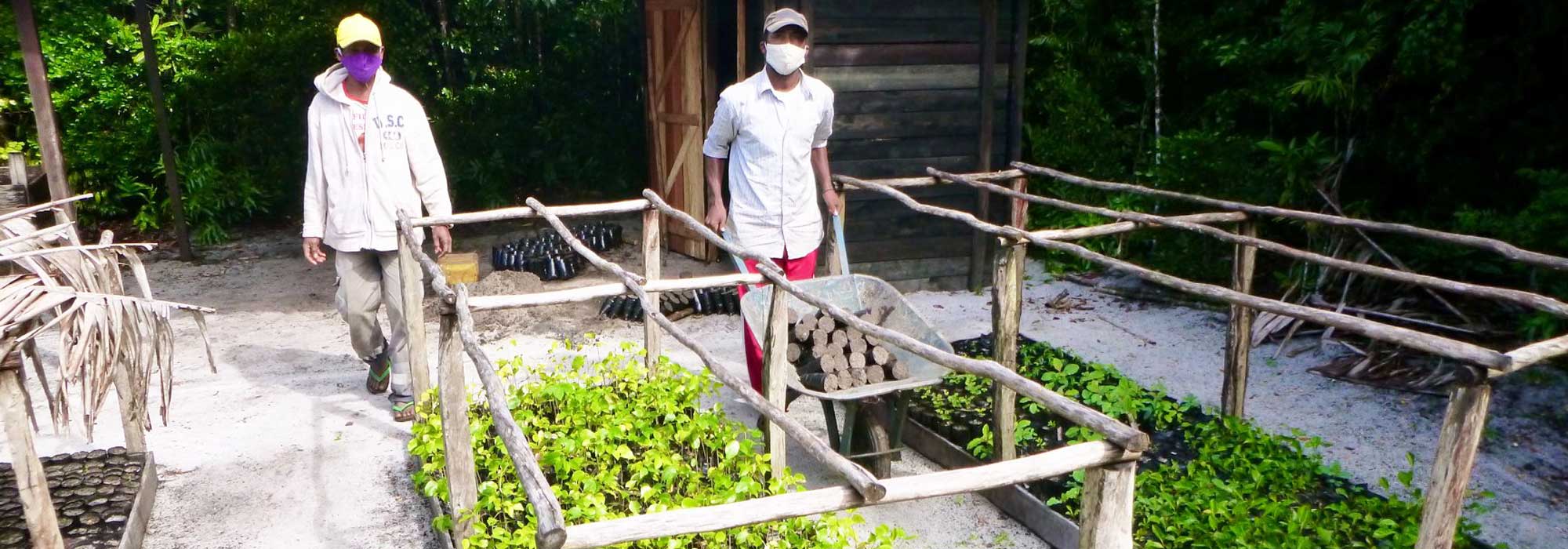SEED’s National Staff Take the Lead on Monitoring for Project Ala
The ultimate goal of a conservation project is to help protect a piece of the Earth’s biodiversity, in the present and the future. But projects cannot last forever, therefore their impact must be sustainable. SEED Madagascar’s mission is to increase the capacity of local actors to achieve sustainable environment, education, and development goals. This is no different for Project Ala, which works to protect the unique biodiversity of Sainte Luce’s littoral forests by connecting habitats and building the capacity of staff, stakeholders, and communities for the forests long-term management.
Like the rest of the world, monitoring for Project Ala halted as the threat of the COVID-19 pandemic became apparent. With the majority of international staff returning home, volunteers suspending their travel, and national staff restricting their movements, it seemed unlikely that activities could resume for a long time. However, with careful and continuous assessment of the local situation and government guidelines, the tentative reopening of travel to Sainte Luce has given rise to a novel and positive opportunity from these unusual circumstances.
SEED’s SCRP guides Hoby and Tsiraiky have taken on the great responsibility of continuing monitoring the corridors and remnant forests for Project Ala in the absence of international staff. This is no mean feat, requiring rapid training in equipment use, data collection and recording, and leadership skills to train and coordinate three local guides in Sainte Luce. International staff have been busy from their various home countries producing detailed protocols and training workshops to support the guides in their new roles and ensure that they have all the information to collect robust data.
SEED’s Conservation Research Programme (SCRP) combines the talent of national staff and local guides with that of international researchers, assistants, and volunteers to collect valuable data for SEED’s conservation and research projects. Our guides are responsible for leading surveys using their expert local knowledge for navigating the forests and spotting and identifying elusive wildlife. While our international team participate in surveys, they are responsible for the organisation of the busy schedule and for the accurate recording and handling of data.
This monitoring is crucial for Project Ala to ensure that the reforested corridors are effective in connecting four littoral forest fragments in the Anosy region of southeast Madagascar. Survival and growth surveys of the planted seedlings help monitor the progress of the corridors’ establishment and improve our understanding of how they should be managed in the future. Flora and fauna surveys provide novel information about local biodiversity and contribute to long-term data sets which will show how biodiversity changes as the corridors develop. This change is very gradual, therefore consistent data is important to allow Project Ala to assess its success in conserving local biodiversity, including three species of endangered and endemic lemurs.
Having to respond to the challenges of a global pandemic has in fact accelerated a vital aspect of conservation for Project Ala. Building local capacity to independently monitor and manage forests creates a greater level of ownership over the project making the continuation of these activities more realistic in the future. Therefore, SEED’s national staff taking responsibility for data collection is an important step in facilitating the sustained protection of biodiversity for both people and nature.
Fittingly, the theme this World Environment Day is biodiversity. Since Project Ala cannot mark the occasion with the community education event as planned, we will instead highlight here the great resilience and determination of our national staff and local guides which has enabled other key activities of our project to continue during this challenging time. Only through sustained data collection will we be able to determine the impact that connecting fragments of littoral forest has on the vulnerable local biodiversity. We are proud of the enthusiasm shown by our national staff to take on this responsibility and it bodes well for the future of conservation in Sainte Luce.
